20 Beautiful Plants That Disguise Eyesores in the Garden
Every garden has spots that are less than perfect, whether it is a worn fence, an old shed, or utility boxes. The good news is that the right plants can make these areas fade into the background. By choosing shrubs, trees, or vines with lush foliage, you can create natural screens that improve the overall view. Many of these plants also bring extra benefits like seasonal flowers, pleasant scents, and greenery that lasts all year. They work for both large spaces and smaller gardens that need a quick refresh. With thoughtful placement, they can turn problem areas into charming focal points.
This post may contain affiliate links, which helps keep this content free. Please read our disclosure for more info.
Bamboo
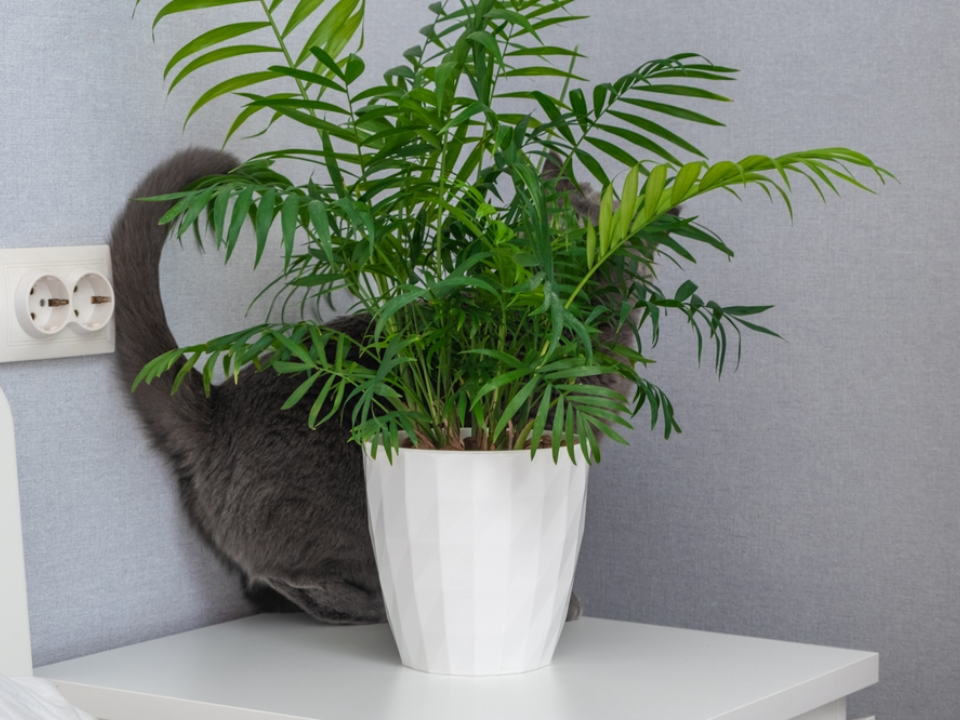
Bamboo is one of the fastest-growing plants and can create an instant screen in the garden. Its tall, dense canes form a natural wall that blocks unwanted views and conceals fences or storage areas. Bamboo works well in both large and small gardens, as it can be grown in the ground or in containers to control spreading. Choosing clumping varieties helps keep it contained and manageable.
With the right conditions, bamboo can thrive with minimal upkeep. It enjoys sunny or partially shaded spots and prefers well-drained soil. Regular watering during dry periods will keep the leaves lush and green. Its rustling sound in the wind adds a soothing element, making it both practical and pleasant to have in the garden.
Arborvitae

Arborvitae is a favorite choice for creating privacy screens and hiding garden eyesores. These evergreen shrubs grow upright and form a dense wall of foliage. Their rich green color remains vibrant throughout the year, which helps keep the garden looking fresh in every season. They work well for hiding utility boxes, sheds, or neighboring buildings.
Arborvitae adapts to different soil types and can grow quickly with proper care. They prefer full sun but can tolerate partial shade. Pruning is minimal, and trimming once or twice a year helps maintain the desired shape. Their tall and narrow growth makes them ideal for tight spaces that need coverage.
Boxwood
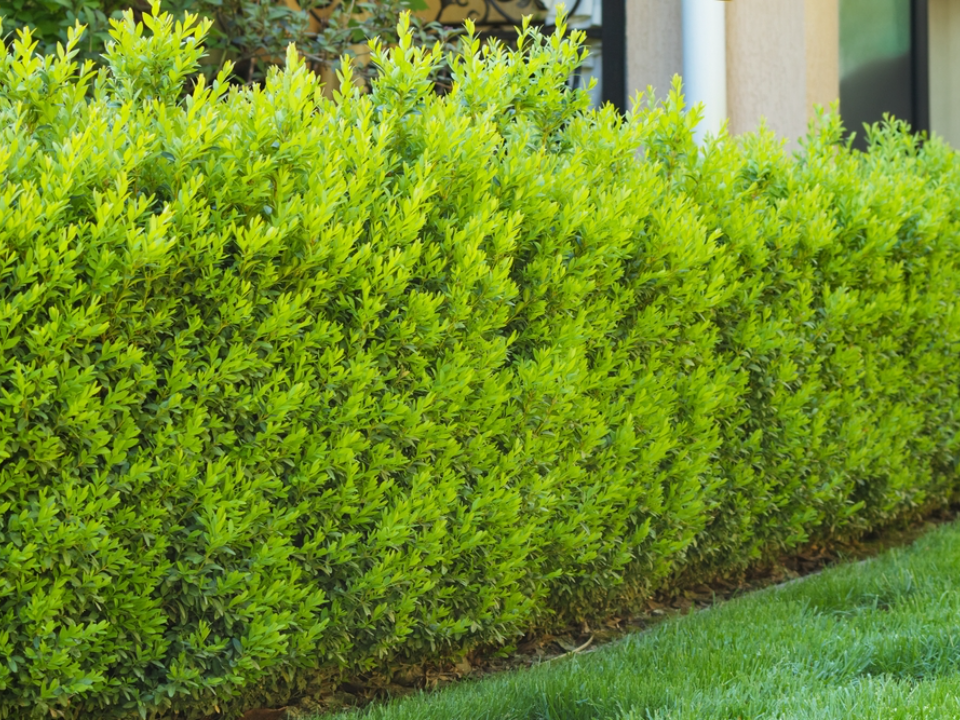
Boxwood shrubs have thick foliage that makes them perfect for masking unattractive areas. They can be shaped into hedges, spheres, or other forms, offering both style and functionality. Boxwoods can be planted in rows to hide fences or create a green barrier for garden corners.
They thrive in partial shade to full sun and prefer well-draining soil. Boxwoods are slow-growing but long-lived, making them a worthwhile investment for permanent coverage. With regular trimming, they maintain their dense structure and look neat throughout the year. Their classic look fits well in both formal and casual gardens.
Holly
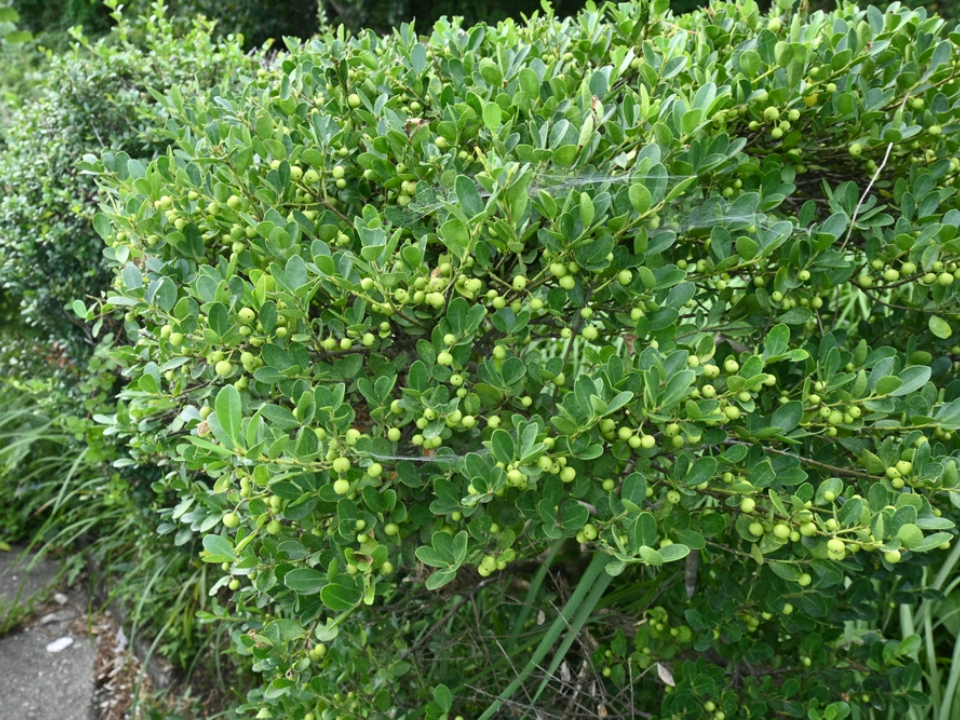
Holly shrubs are known for their glossy leaves and bright berries that bring life to the garden. They can be planted in clusters to block views and disguise less appealing spots. The spiny leaves can even act as a natural barrier to deter unwanted animals from entering.
These shrubs are hardy and adaptable, growing well in different climates. They prefer sunny spots but will tolerate some shade. Watering during dry spells keeps them healthy, and occasional pruning helps shape them. In winter, the red berries add seasonal color, making them both useful and decorative.
Hydrangea
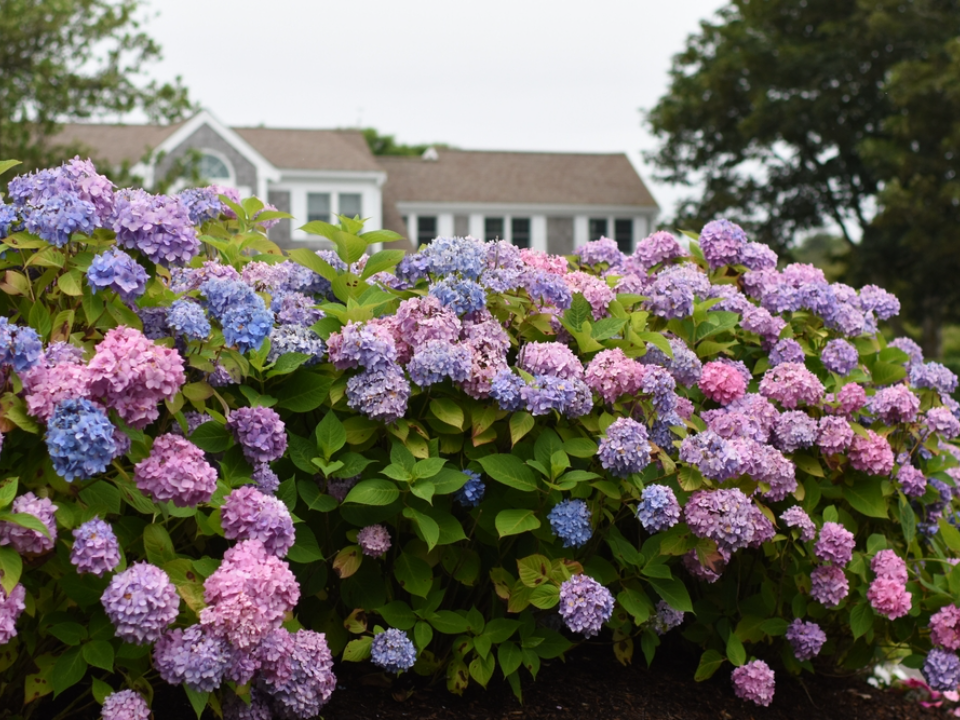
Hydrangeas produce large, colorful blooms that make them ideal for covering unattractive spaces. Their big leaves and clustered flowers create a thick visual shield that draws attention away from less appealing views. They work well near walls, fences, or compost areas.
These plants thrive in rich, moist soil and benefit from partial shade. Pruning after blooming keeps them looking their best and encourages healthy growth. Hydrangeas come in many varieties, offering colors from pink to blue depending on soil pH. Their lush look brings charm to any garden.
Forsythia
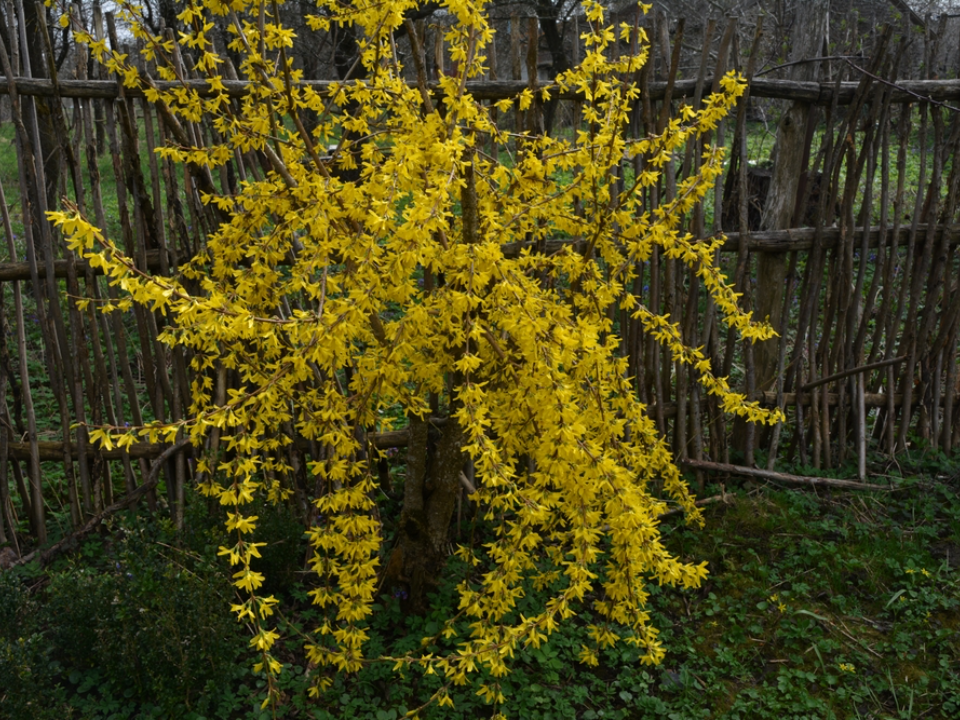
Forsythia is a fast-growing shrub that bursts into bright yellow flowers in spring. Its dense growth can quickly conceal unsightly areas, making it a practical option for garden screening. Once in bloom, it creates a vibrant display that naturally draws the eye.
This shrub prefers sunny locations and well-drained soil. It requires minimal maintenance beyond occasional pruning after flowering. Forsythia is also tolerant of various soil conditions, making it a reliable choice for many gardeners. Its seasonal blooms are a cheerful way to disguise problem spots.
Lilac
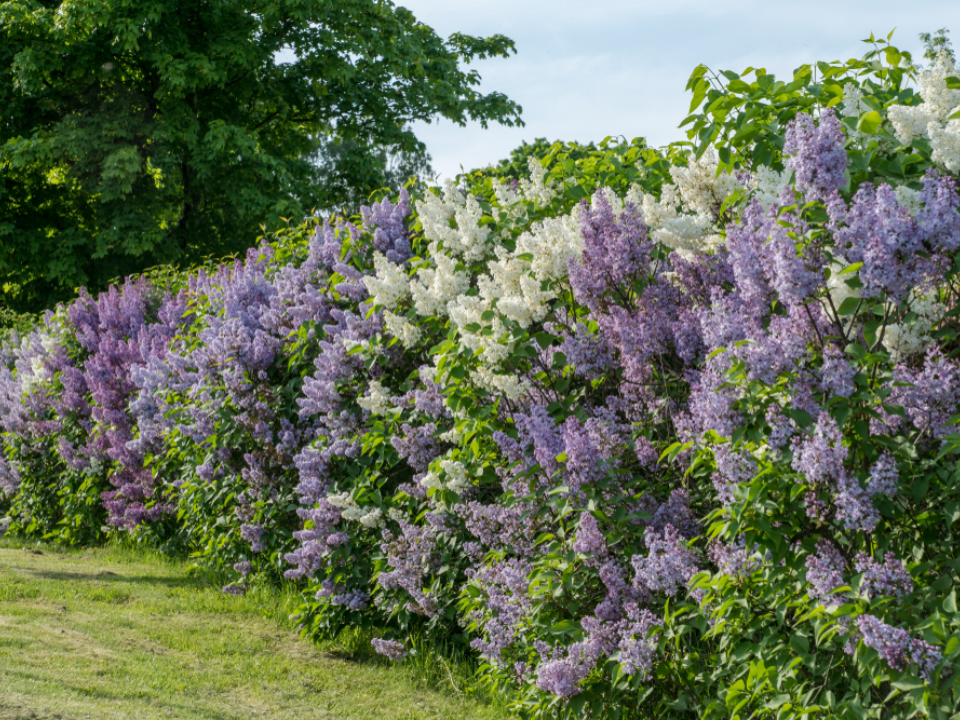
Lilac bushes bring both beauty and fragrance to the garden. Their tall growth and full clusters of flowers can effectively hide garden sheds, compost bins, or unattractive fences. When in bloom, the scent can fill the air and enhance the garden’s appeal.
Lilacs prefer full sun and well-drained soil for best flowering. They require some pruning after blooming to keep their shape and encourage more flowers the following year. While they bloom for only a few weeks, their lush green foliage continues to provide coverage for the rest of the season.
Camellia
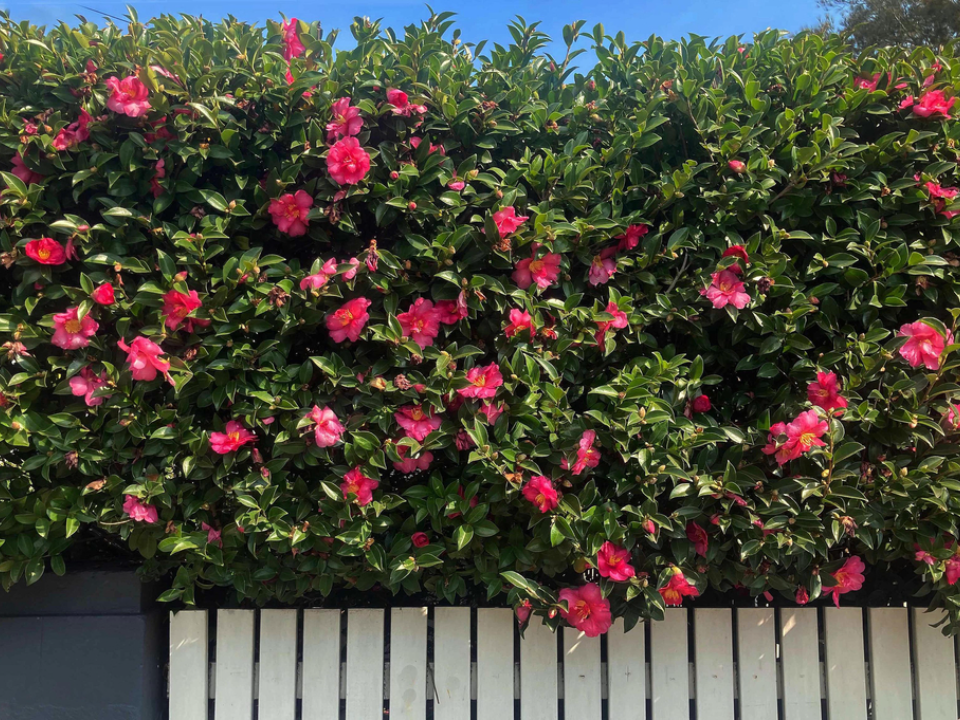
Camellias offer glossy evergreen leaves and stunning blooms that can brighten shady corners. Their dense foliage makes them excellent for hiding air conditioning units or old walls. They provide year-round greenery, with bursts of color during their flowering season.
Camellias prefer partial shade and acidic, well-drained soil. They benefit from mulching to keep roots cool and moist. With minimal pruning, they can grow into large, impressive shrubs that add elegance while serving a functional purpose in the garden.
Rose of Sharon
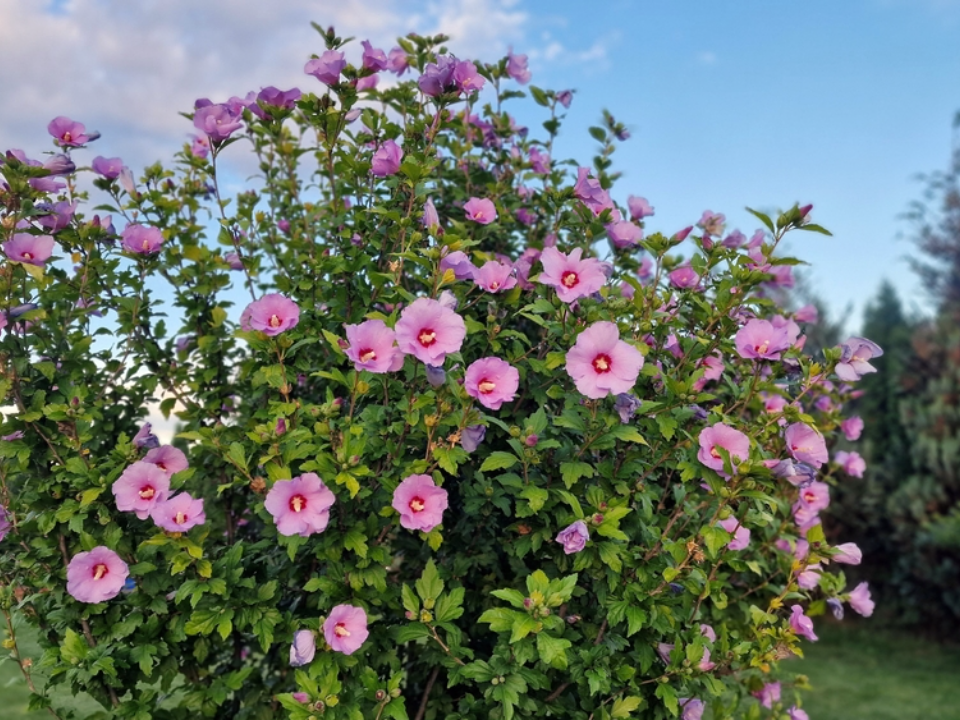
Rose of Sharon produces large, showy flowers in late summer, making it perfect for adding color while covering less attractive views. Its tall, upright habit helps block sightlines to sheds or neighboring properties. The flowers attract pollinators, adding life to the garden.
This shrub thrives in sunny spots and can adapt to different soil conditions. Pruning in early spring helps maintain its shape and encourages strong blooms. It is relatively low-maintenance, providing long-lasting visual coverage with seasonal interest.
Juniper

Junipers are hardy evergreens that can grow as shrubs or trees, depending on the variety. They work well as natural screens for concealing utility areas or property lines. Their needle-like foliage adds texture to the garden while providing consistent coverage.
They prefer sunny spots and well-drained soil. Junipers require little pruning and are drought-tolerant once established. Their durability and low upkeep make them a practical choice for year-round coverage.
Privet
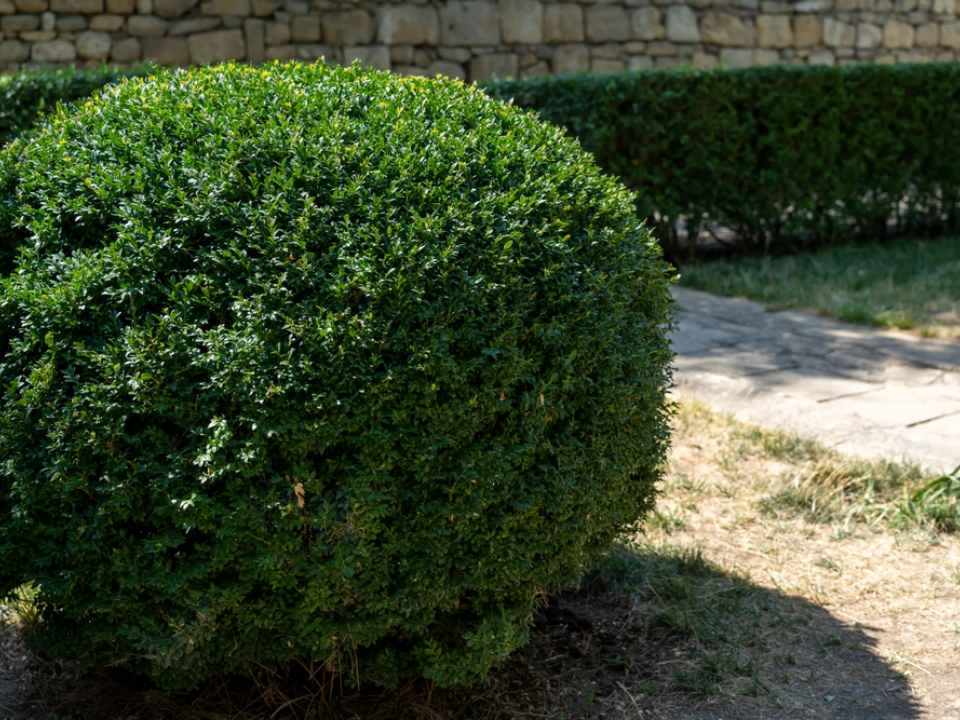
Privet hedges are well known for their fast growth and dense foliage, making them a quick solution for screening. They can easily hide chain-link fences, storage sheds, or compost areas. Their small, glossy leaves create a tidy look that can be shaped with regular trimming.
Privet grows best in full sun to partial shade and can tolerate a variety of soil types. It responds well to pruning, which allows gardeners to maintain the desired height and thickness. With consistent care, privet hedges can last for many years while keeping unattractive spots out of sight.
Viburnum
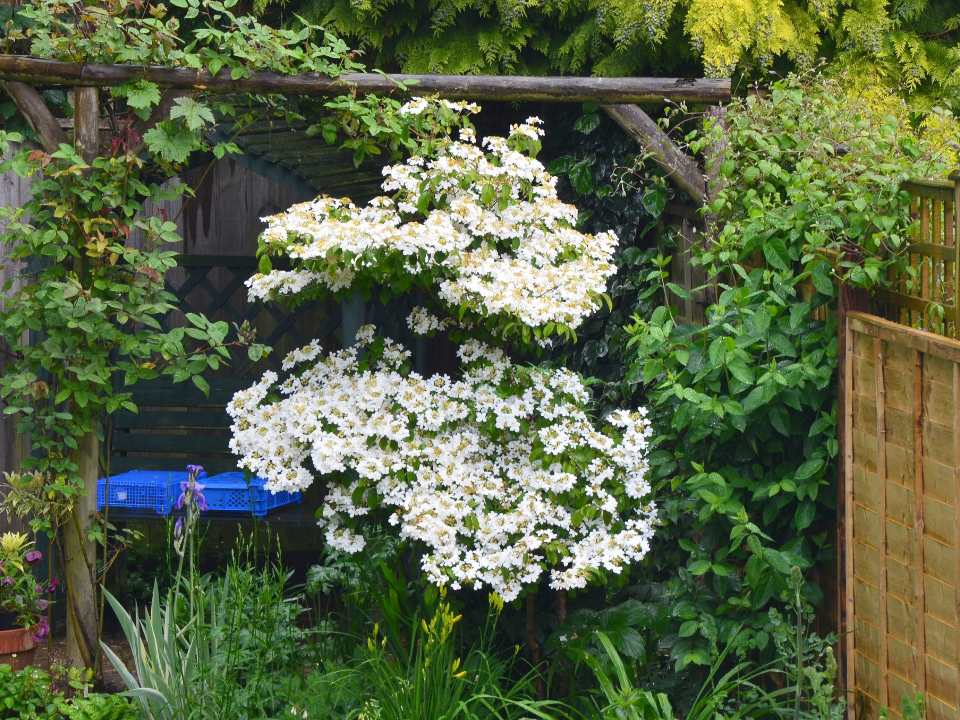
Viburnum shrubs come in many varieties, offering white or pink flowers in spring and colorful berries in autumn. Their thick foliage works well for hiding garden boundaries or unattractive walls. Many types also have fragrant blooms, adding another layer of appeal.
These shrubs thrive in full sun or partial shade and prefer well-draining soil. They are low-maintenance and only require pruning to remove old or damaged branches. Viburnum’s combination of flowers, berries, and lush leaves makes it an attractive and functional choice for garden coverage.
Weigela

Weigela is a flowering shrub that produces clusters of pink, red, or white blooms in late spring. Its arching branches and leafy growth make it ideal for hiding less appealing garden areas. Once established, it brings vibrant color and visual interest while serving as a screen.
This plant thrives in full sun and well-drained soil, although it can tolerate some shade. Light pruning after flowering helps keep it healthy and encourages more blooms the next season. Its colorful flowers also attract hummingbirds, adding movement to the garden.
Spirea
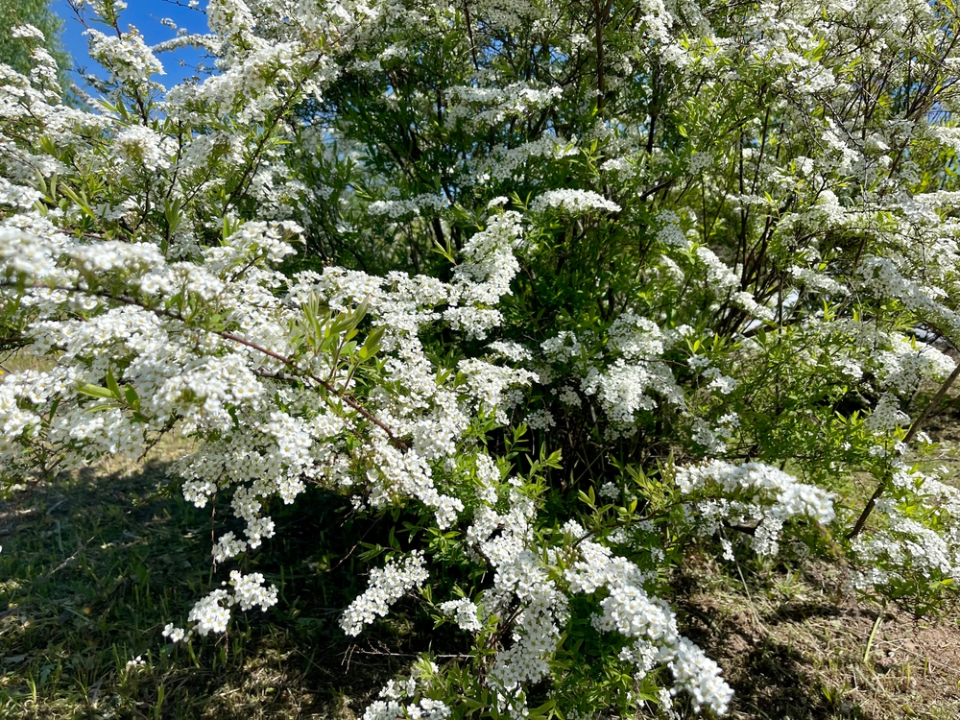
Spirea shrubs are valued for their cascading clusters of flowers and attractive foliage. They grow in a variety of shapes and sizes, making them suitable for concealing small utility boxes or larger garden structures. Their seasonal blooms draw attention away from unattractive views.
These shrubs prefer sunny locations and adapt well to most soil types. They require little maintenance beyond occasional pruning after flowering. Spirea’s changing leaf colors through the seasons offer year-round visual appeal in addition to coverage.
Azalea
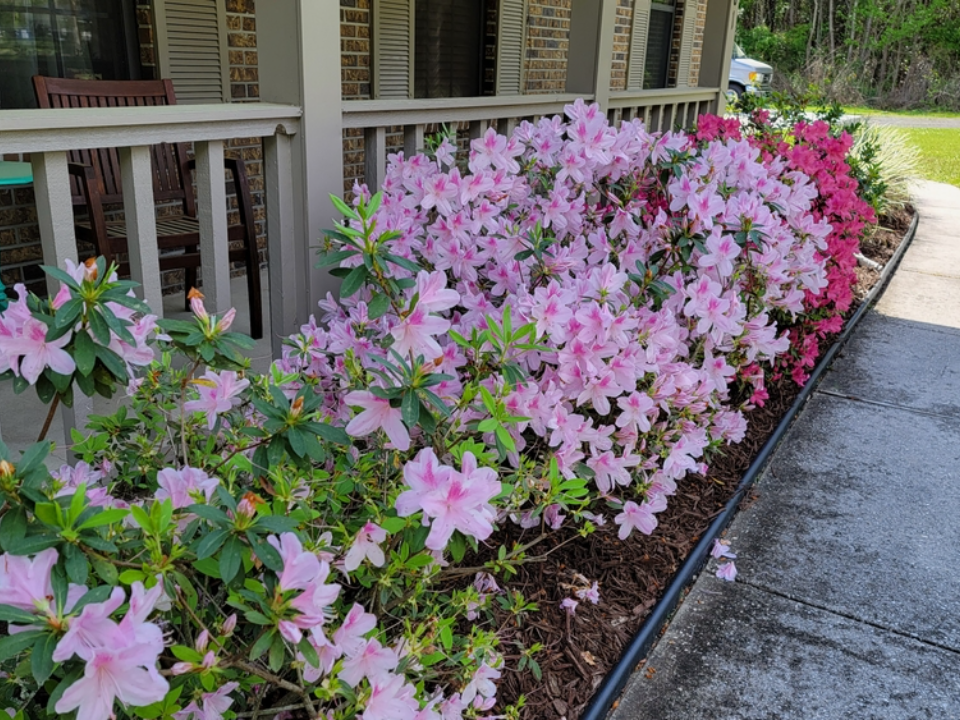
Azaleas produce masses of flowers in spring, turning dull areas into colorful displays. Their dense growth can help hide fences or uneven ground. They work particularly well in shaded gardens where other flowering plants may struggle.
They thrive in acidic, well-drained soil and prefer dappled sunlight. Mulching helps retain soil moisture and keep roots cool. Pruning after flowering keeps their shape and encourages more blooms the following year.
Photinia
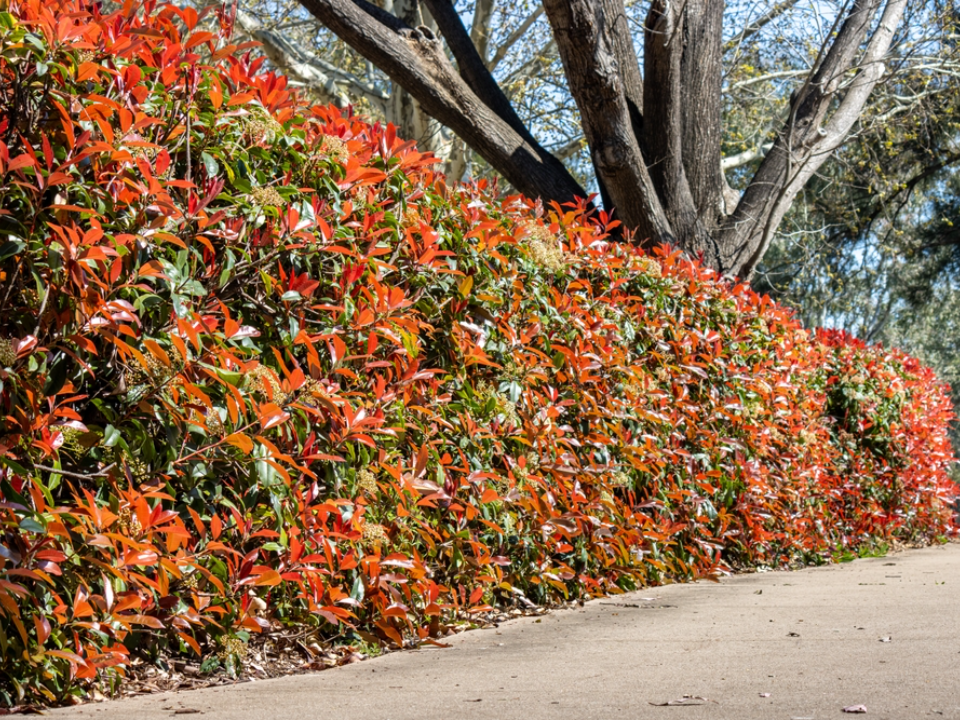
Photinia is an evergreen shrub known for its red-tipped new growth. It forms a dense hedge that can block unwanted views and add color at the same time. This makes it an appealing choice for concealing less attractive garden spots.
Photinia prefers sunny locations but can tolerate some shade. It responds well to trimming, which promotes more colorful new growth. Regular care will keep it lush and effective as a natural screen.
Fatsia Japonica

Fatsia Japonica has large, glossy leaves that provide an exotic look while covering garden eyesores. It is perfect for filling shady corners or hiding air conditioning units and utility meters. Its bold foliage remains green throughout the year.
This plant thrives in partial to full shade and prefers moist, well-drained soil. It is low-maintenance, requiring only occasional pruning to remove damaged leaves. Fatsia Japonica’s dramatic leaves make it both practical and decorative.
Oleander
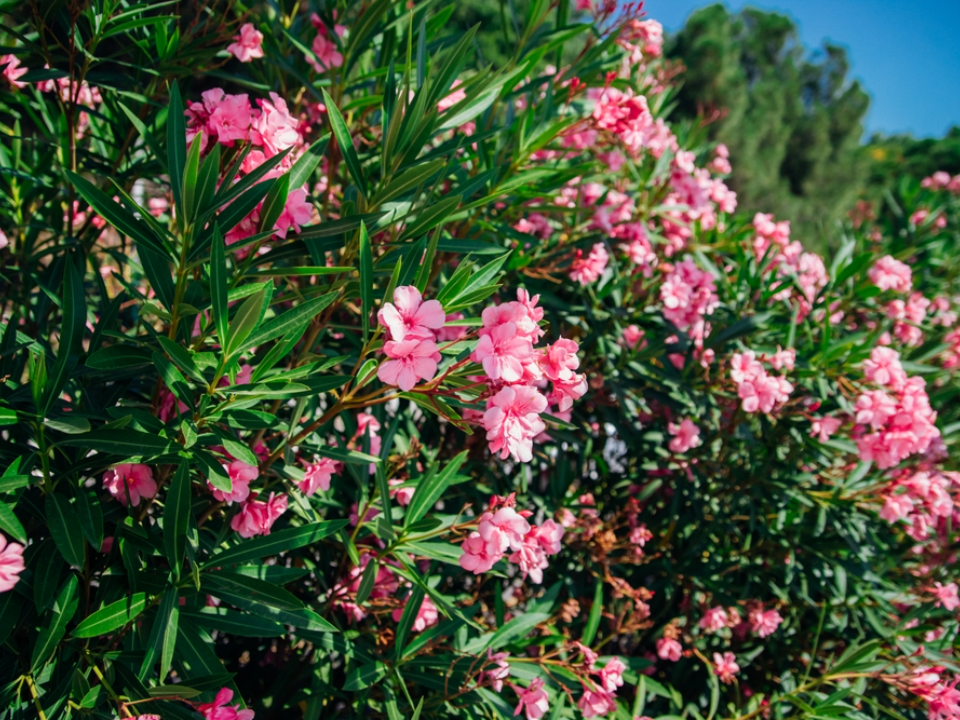
Oleander is a flowering shrub with dense, leathery leaves and bright blooms in shades of pink, white, or red. It grows tall enough to hide fences or create privacy screens. Its long blooming season adds continuous color to the garden.
It thrives in sunny areas with well-drained soil and is drought-tolerant once established. Regular pruning helps maintain its shape and encourages more flowers. Oleander is a strong performer in warm climates where year-round coverage is needed.
Clematis

Clematis is a climbing vine that produces an array of colorful flowers. It can be trained to grow over trellises, fences, or old structures to hide them from view. With many varieties available, it offers a wide range of colors and bloom times.
Clematis prefers sunny tops and shaded roots, which can be achieved by planting low-growing plants around its base. It grows best in well-drained soil with regular watering. Pruning requirements vary depending on the variety, but it remains a favorite for covering vertical spaces.
Honeysuckle
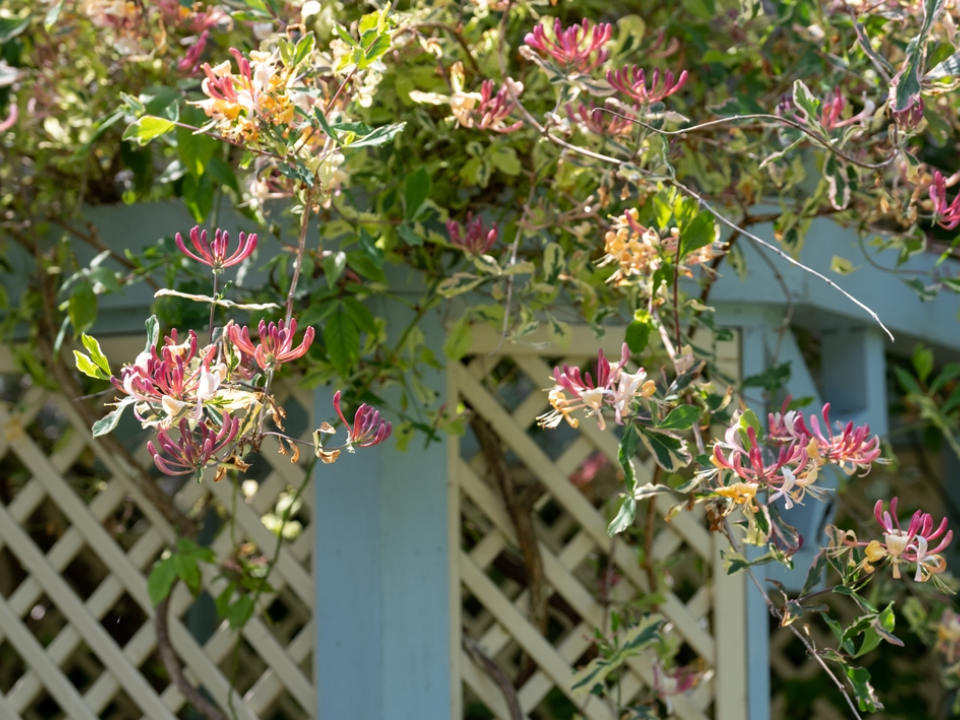
Honeysuckle vines grow quickly and produce fragrant flowers that attract pollinators. They can be trained to climb over fences, trellises, or garden walls, effectively concealing unattractive areas. Their scent adds a pleasant touch to any outdoor space.
They thrive in sunny locations and tolerate various soil conditions. Honeysuckle requires occasional pruning to prevent overgrowth. With the right support, it creates a dense and fragrant covering that improves both appearance and privacy in the garden.
This article originally appeared on Avocadu.
